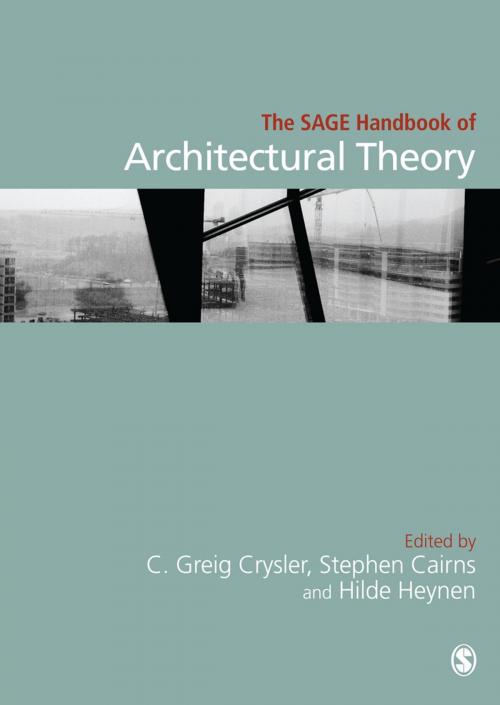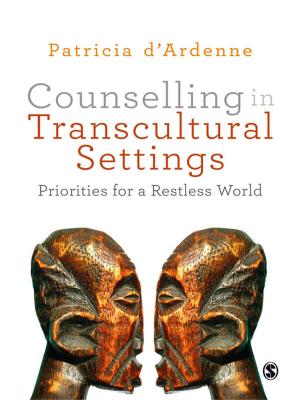The SAGE Handbook of Architectural Theory
Nonfiction, Social & Cultural Studies, Political Science, Politics, Regional Planning, Art & Architecture, Architecture, Science & Nature, Nature| Author: | ISBN: | 9781473971165 | |
| Publisher: | SAGE Publications | Publication: | January 10, 2012 |
| Imprint: | SAGE Publications Ltd | Language: | English |
| Author: | |
| ISBN: | 9781473971165 |
| Publisher: | SAGE Publications |
| Publication: | January 10, 2012 |
| Imprint: | SAGE Publications Ltd |
| Language: | English |
"Offers an intense scholarly experience in its comprehensiveness, its variety of voices and its formal organization... the editors took a risk, experimented and have delivered a much-needed resource that upends the status-quo."
- Architectural Histories, journal of the European Architectural History Network
"Architectural theory interweaves interdisciplinary understandings with different practices, intentions and ways of knowing. This handbook provides a lucid and comprehensive introduction to this challenging and shifting terrain, and will be of great interest to students, academics and practitioners alike."
- Professor Iain Borden, UCL Bartlett School of Architecture
"In this collection, architectural theory expands outward to interact with adjacent discourses such as sustainability, conservation, spatial practices, virtual technologies, and more. We have in The Handbook of Architectural Theory an example of the extreme generosity of architectural theory. It is a volume that designers and scholars of many stripes will welcome."
- K. Michael Hays, Eliot Noyes Professor of Architectural Theory, Harvard University
The SAGE Handbook of Architectural Theory documents and builds upon the most innovative developments in architectural theory over the last two decades. Bringing into dialogue a range of geographically, institutionally and historically competing positions, it examines and explores parallel debates in related fields. The book is divided into eight sections:
- Power/Difference/Embodiment
- Aesthetics/Pleasure/Excess
- Nation/World/Spectacle
- History/Memory/Tradition
- Design/Production/Practice
- Science/Technology/Virtuality
- Nature/Ecology/Sustainability
- City/Metropolis/Territory.
Creating openings for future lines of inquiry and establishing the basis for new directions for education, research and practice, the book is organized around specific case studies to provide a critical, interpretive and speculative enquiry into the relevant debates in architectural theory.
"Offers an intense scholarly experience in its comprehensiveness, its variety of voices and its formal organization... the editors took a risk, experimented and have delivered a much-needed resource that upends the status-quo."
- Architectural Histories, journal of the European Architectural History Network
"Architectural theory interweaves interdisciplinary understandings with different practices, intentions and ways of knowing. This handbook provides a lucid and comprehensive introduction to this challenging and shifting terrain, and will be of great interest to students, academics and practitioners alike."
- Professor Iain Borden, UCL Bartlett School of Architecture
"In this collection, architectural theory expands outward to interact with adjacent discourses such as sustainability, conservation, spatial practices, virtual technologies, and more. We have in The Handbook of Architectural Theory an example of the extreme generosity of architectural theory. It is a volume that designers and scholars of many stripes will welcome."
- K. Michael Hays, Eliot Noyes Professor of Architectural Theory, Harvard University
The SAGE Handbook of Architectural Theory documents and builds upon the most innovative developments in architectural theory over the last two decades. Bringing into dialogue a range of geographically, institutionally and historically competing positions, it examines and explores parallel debates in related fields. The book is divided into eight sections:
- Power/Difference/Embodiment
- Aesthetics/Pleasure/Excess
- Nation/World/Spectacle
- History/Memory/Tradition
- Design/Production/Practice
- Science/Technology/Virtuality
- Nature/Ecology/Sustainability
- City/Metropolis/Territory.
Creating openings for future lines of inquiry and establishing the basis for new directions for education, research and practice, the book is organized around specific case studies to provide a critical, interpretive and speculative enquiry into the relevant debates in architectural theory.















